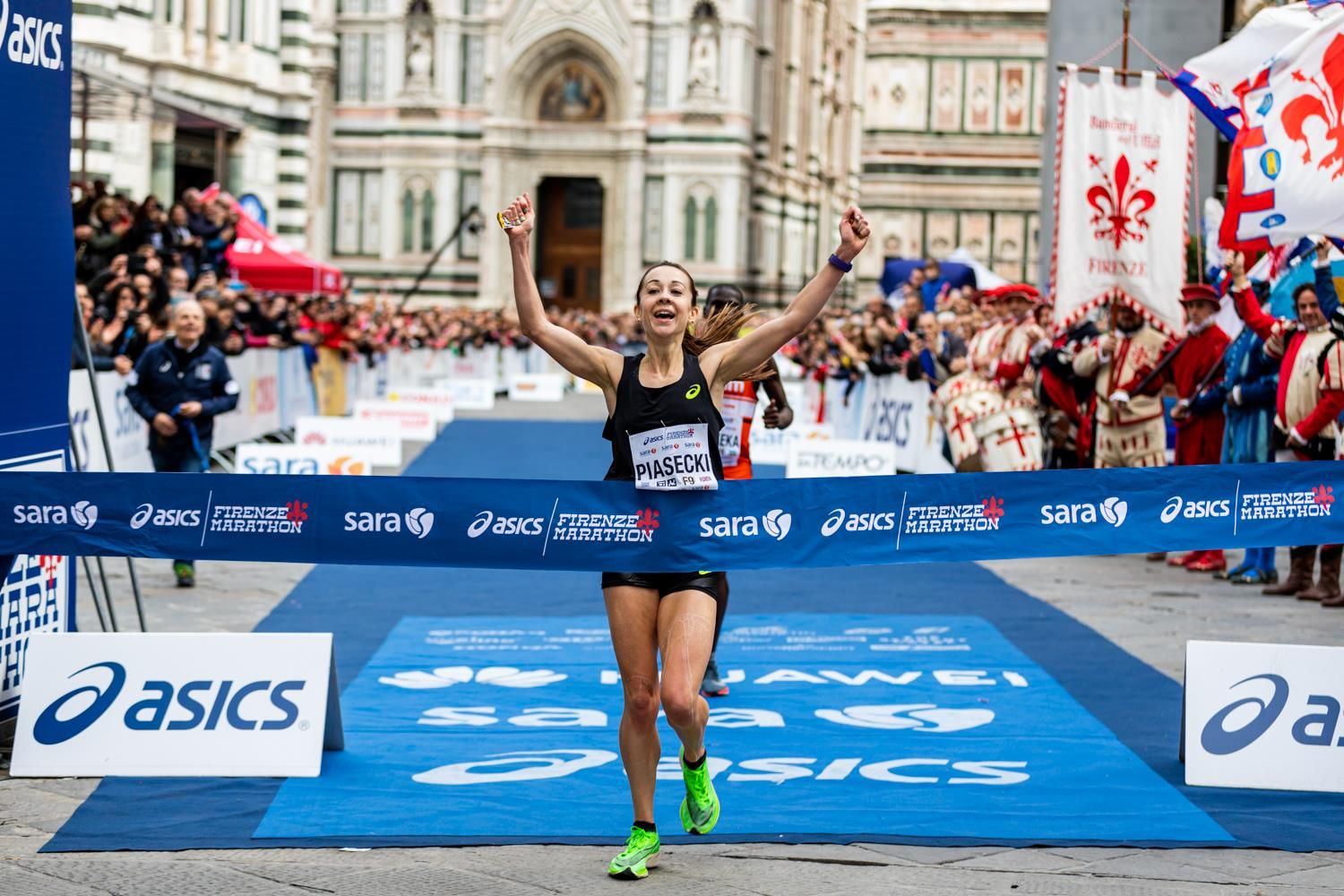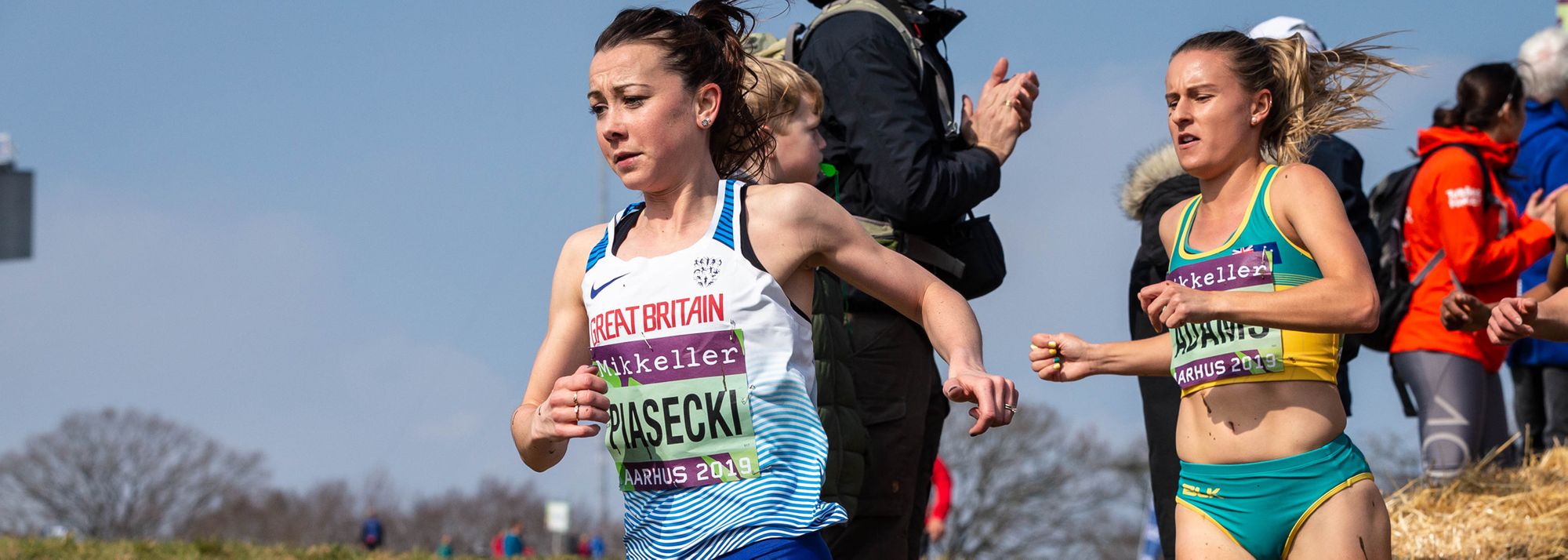Jess Piasecki in action at the World Cross Country Championships Aarhus 2019 (© Dan Vernon)
It started with a foot injury in 2008.
Back then, I was aged 18 and I’d represented Great Britain on the track and cross-country at the world and European level, but I’d never had a serious injury. I was so naïve, I’d never even had a physio appointment before, nor did I know what rehab or cross training was.
The injury was diagnosed as a stress fracture of the navicular bone. Anyone who’s had that particular injury knows that it’s not the most pleasant. It doesn’t heal particularly quickly because the blood supply to that bone isn’t very good.
Sure enough, it took a while to heal. I’d go through six months of really good running and racing, even setting PBs, but then I’d be out again for an even longer period of time.
When I was younger, I never had a natural menstrual cycle. I went on the oral contraceptive pill, which gives you the perception that everything is okay. When you develop as a younger child, that’s when you gain all of your maximum bone strength. Women will get their input of oestrogen, which is really important for bones, but I never had that before I went on the pill. Running on bones that hadn’t properly developed led to further injury problems.
In 2012 I discovered I had compression fractures in my back. I was referred to a bone metabolism specialist, who examined my scans and diagnosed me with osteoporosis. I was prescribed bisphosphonate tablets, which try to halt any bone formation as well as bone breaking down. At that point the injury was still at a manageable level and later that winter I even went on to win the European Cross.

Jess Piasecki on her way to winning the U23 race at the 2012 European Cross Country Championships (© Getty Images)
As the concept of RED-S evolved, I became more aware of it. And through all of my experiences, I reflected back and realised that this is what I went through as a younger person.
The female athlete triad links amenorrhea (the loss of menstrual cycles) with osteoporosis and low energy availability. Basically if you don’t have enough energy or you’re expending more than you’re putting in through your diet, then your body goes into survival mode and tries to conserve the energy that it has left over. One of the ways it does that is to stop menstrual cycles, because you don’t need those to survive. As a consequence, without oestrogen regularly increasing throughout your menstrual cycle, you get a decline in bone health, and eventually that can lead to osteoporosis.
Now we have the RED-S model which was devised in 2014 and illustrates how low energy availability can influence a whole host of physiological mechanisms – not only bone health and the menstrual cycle, but it can affect your immune system, cardiovascular system, gastrointestinal system and so on. The way a lot of scientists and I see it is that the female athlete triad sits within the RED-S model.

How the female athlete triad sits inside the RED-S model
RED-S doesn’t simply affect people with eating disorders. For people at the elite level who train hard, it can sometimes be difficult to eat as much as your body needs. It doesn’t just affect women, either. For men with low energy availability, testosterone can be impaired which can also affect fertility, reproductive function and bone health.
I had a few good years of running, and 2015 in particular was really good. But at the end of that year I tore my plantar fascia in Frankfurt during my first attempt at a marathon. I tried to return in time for the London Marathon in 2016 as it was the Olympic trial race, but I probably increased the workload a bit too quickly because it aggravated my back. I had some scans and discovered a few more compression fractures than I expected to find. It wasn’t painful, but it just made me acutely more aware of the problem. For 18 months I had intramuscular injections of teriparatide, which speeds up bone formation.
It was only from the research I’d been doing and my knowledge of the subject that brought it all to a head. My undergraduate degree was in anatomical sciences, and I went on to do a masters degree, during which I started my female athlete research. I’ve always been interested in biology and physiology, and my experiences have definitely fuelled that passion and drive.
I finally addressed it properly in 2017. I took a step back from running and came off the pill. I also started training under Rob Hawkins, but at that time in my life, running wasn’t my main focus because I was getting ready for my wedding and doing my PhD.
In about June 2018 I finished my PhD, I started a new job as a lecturer in exercise physiology at Nottingham Trent University, and I reached a point where I knew I was in a much healthier place. That was the turning point.
From there, I started to slowly build up my mileage. I did a few local road races towards the end of that year and I qualified for the European Cross for the first time in six years. Just making that team was really good and made me feel as though I was back on the right track. I went on to have a great year in 2019, winning the Florence Marathon in a PB of 2:25:29 and being named captain of the British team at the World Cross in Aarhus, where I finished 36th. Twelve years after my last appearance at the World Cross, it was great to be back representing my country at the global level.

Jess Piasecki wins the Florence Marathon (© organisers)
I really thrive off marathon training and now I want to continue to progress in that event and do all the majors, especially London and New York, and get down to the low 2:20s. Two big marathons a year, along with a few 10ks and half marathons, would be so cool. I’d definitely be tempted to do the World Cross and European Cross if they fitted into our plans.
I still get niggles, like most other athletes, but they’re more manageable now. I’ve lost a few centimetres in height over the years, which can happen if your fractures compress. But now I’m on the right track, my bone health has reached a really good point; my bone doctor is actually quite impressed.
Last year a couple of colleagues and I launched the Female Athlete Podcast, which is a platform where we translate all this research jargon into lay terminology so that people can understand everything about female physiology in women’s sport. It’s going really well – and it has certainly been a good lockdown project!
I’m proud of what I’ve achieved – and hopefully I’ll go on to achieve a lot more in the next five or 10 years – but more importantly I want to share my experiences so that coaches, parents and athletes become more aware of this issue. Hopefully it will become part of the normal training conversation. Just that little bit of acknowledgement can help the later progression.
I can’t say to other women that they should never take the oral contraceptive because there’s definitely a need for it in some cases. It’s just about being aware of the implications and knowing what the best thing is for you.
One of my main pieces of advice is: don’t be afraid to step away for the short term, because the longer-term gains are absolutely huge. If you can make those changes when you’re in your teens and do it for the greater good, then you’ll be reaping the rewards for years to come. It’s about being brave and having the right mentality.



